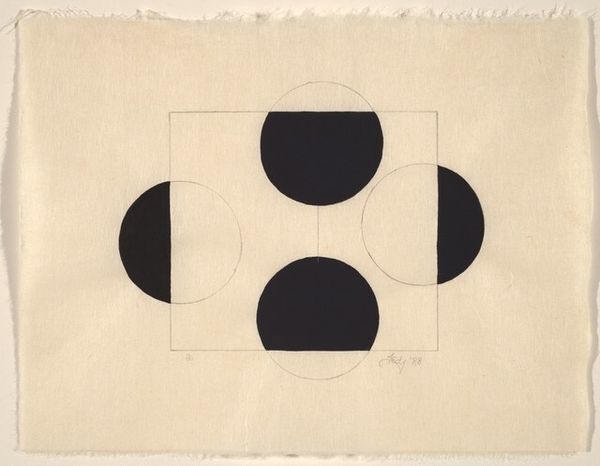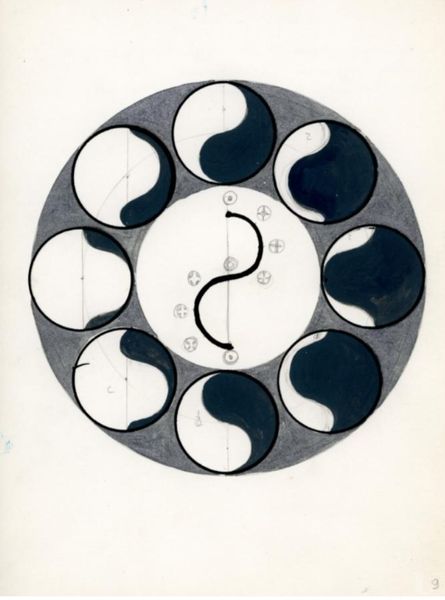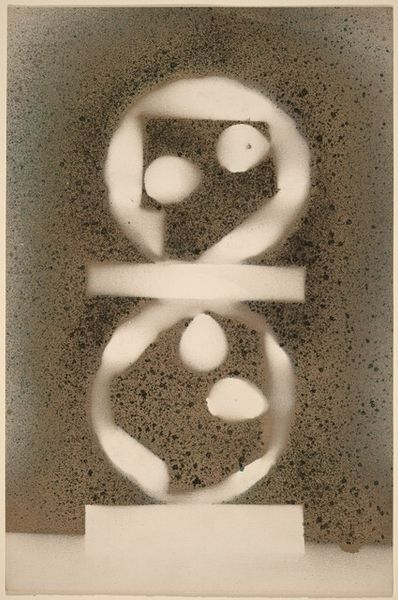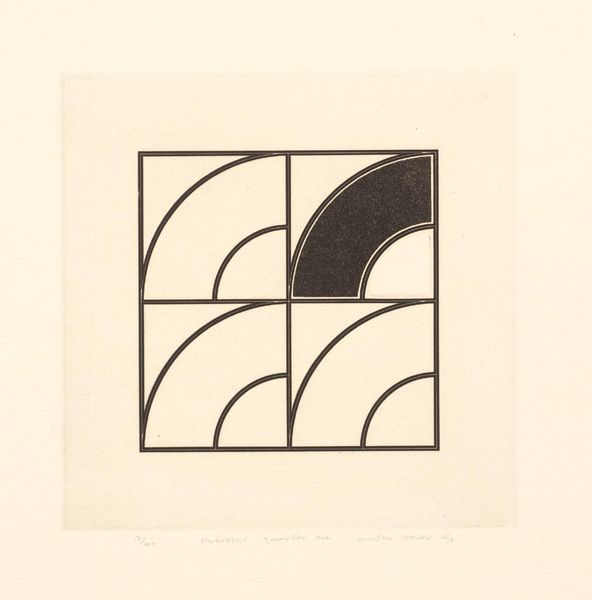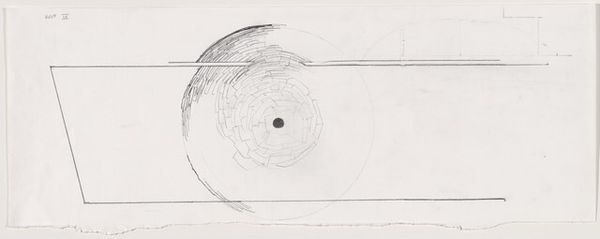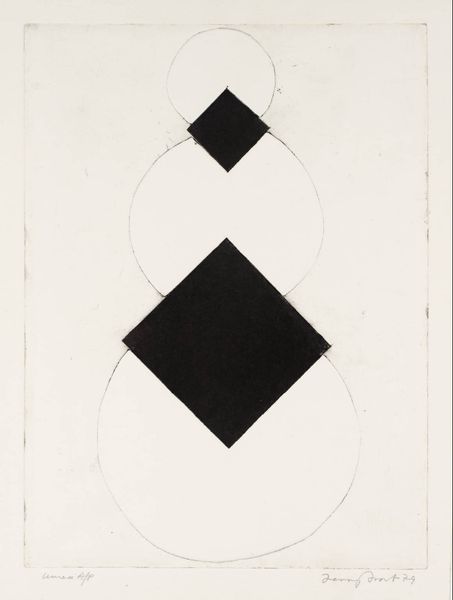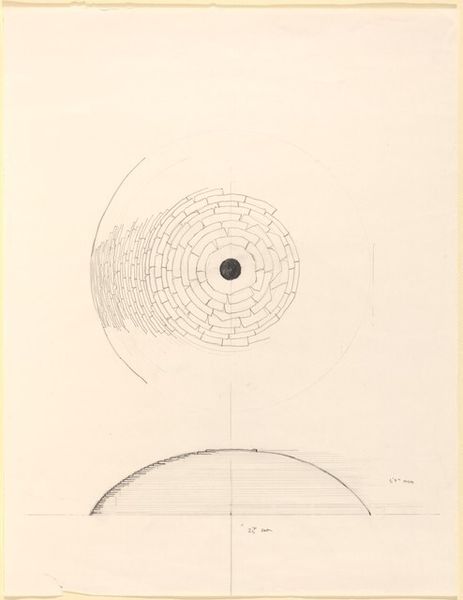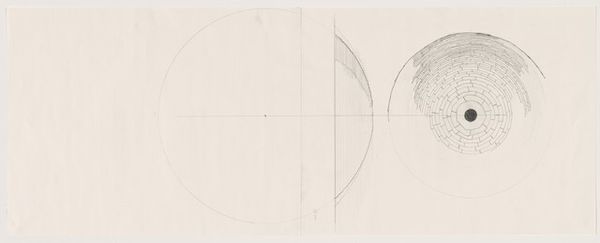
drawing, mixed-media
#
drawing
#
mixed-media
#
concrete-art
#
conceptual-art
#
minimalism
#
circle
#
pencil drawing
#
geometric
#
geometric-abstraction
#
abstraction
#
line
Copyright: Gottfried Honegger,Fair Use
Curator: So, before us is Gottfried Honegger's "Bise Autage," a mixed-media drawing from 1967. What strikes you most immediately? Editor: It feels incredibly subtle, almost shy. At first glance, it’s a simple circle, but then the curves start to emerge. Like whispers, faint but persistent. There’s something serene and perhaps melancholic in its quietness. Curator: Indeed. Honegger’s work fits within a broader European movement towards geometric abstraction and Concrete Art in the post-war era, reflecting a desire for objectivity and universality after the chaos of the World Wars. Artists explored pure form, color, and material. Honegger moved towards exploring conceptual art and minimalism later on, engaging with the line itself, playing with the interplay of figure and ground. Editor: I get a sense of almost meditative repetition. Like someone slowly, deliberately drawing these curves. The solid black semi-circles at the top and bottom anchor it, I guess, keeping it from floating away completely. What kind of statements was Honegger trying to make with his art? Curator: That's the core question of Honegger’s practice, right? Moving away from art as representation, instead prioritizing a materialist approach, where art embodies an autonomous reality based on shape, form, and, well, simply the experience of existing as itself. If we consider that post-war context, the use of geometry—circles, lines—as a means of deconstruction can be read as a move to divorce the medium from the violent legacy that the human eye had witnessed. Editor: Hmm, a clean break, using minimalist shapes almost as visual cleansing agents. Maybe. Or maybe I'm overthinking it! It’s funny how something so simple can invite such complicated interpretations. I appreciate the emptiness it creates. I think... yeah, I do think that "Bise Autage" holds a lot of value as a mirror, in a way. Curator: I completely concur. It is a work that prompts questions regarding what constitutes 'art' and its role in society, or in our experience, more generally. It resists definitive readings, positioning the observer centrally within the narrative. It's all about creating a dialogue and connection through forms and shapes rather than through easily read narrative. Editor: Yes! In this way, the silent whispers transform to audible conversation... Art for thought's sake, perhaps. I find it quite stimulating, now.
Comments
No comments
Be the first to comment and join the conversation on the ultimate creative platform.
